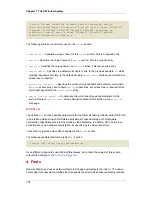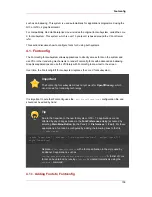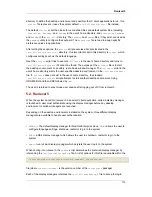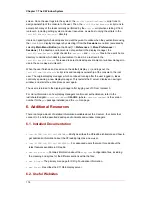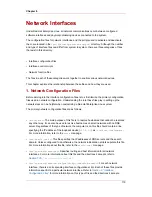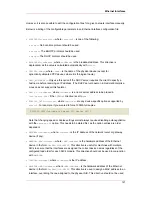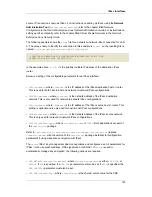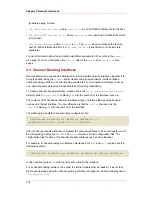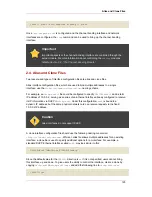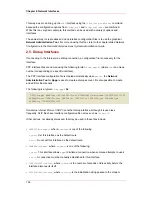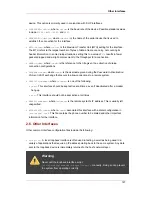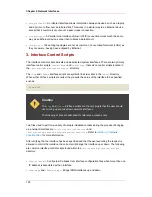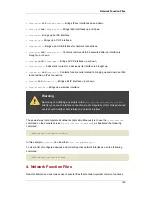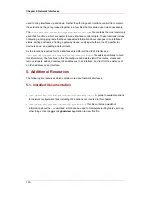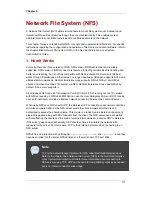
Network Interfaces
Under Red Hat Enterprise Linux, all network communications occur between configured
software interfaces and physical networking devices connected to the system.
The configuration files for network interfaces, and the scripts used to activate and deactivate
them, are located in the
/etc/sysconfig/network-scripts/
directory. Although the number
and type of interface files can differ from system to system, there are three categories of files
that exist in this directory:
• Interface configuration files
• Interface control scripts
• Network function files
The files in each of these categories work together to enable various network devices.
This chapter explores the relationship between these files and how they are used.
1. Network Configuration Files
Before delving into the interface configuration files, let us first itemize the primary configuration
files used in network configuration. Understanding the role these files play in setting up the
network stack can be helpful when customizing a Red Hat Enterprise Linux system.
The primary network configuration files are as follows:
•
/etc/hosts
— The main purpose of this file is to resolve hostnames that cannot be resolved
any other way. It can also be used to resolve hostnames on small networks with no DNS
server. Regardless of the type of network the computer is on, this file should contain a line
specifying the IP address of the loopback device (
127.0.0.1
) as
localhost.localdomain
.
For more information, refer to the
hosts
man page.
•
/etc/resolv.conf
— This file specifies the IP addresses of DNS servers and the search
domain. Unless configured to do otherwise, the network initialization scripts populate this file.
For more information about this file, refer to the
resolv.conf
man page.
•
/etc/sysconfig/network
— Specifies routing and host information for all network
interfaces. For more information about this file and the directives it accepts, refer to
Section 1.25, “
/etc/sysconfig/network
”
.
•
/etc/sysconfig/network-scripts/ifcfg-<interface-name>
— For each network
interface, there is a corresponding interface configuration script. Each of these files provide
information specific to a particular network interface. Refer to
Section 2, “Interface
Configuration Files”
for more information on this type of file and the directives it accepts.
Chapter 8.
119
Summary of Contents for ENTERPRISE LINUX 4.5.0 -
Page 1: ...Red Hat Enterprise Linux 4 5 0 4 5 0 Reference Guide ISBN N A Publication date ...
Page 2: ...Red Hat Enterprise Linux 4 5 0 ...
Page 4: ...Red Hat Enterprise Linux 4 5 0 ...
Page 24: ...xxiv ...
Page 26: ......
Page 36: ...12 ...
Page 72: ...48 ...
Page 112: ...88 ...
Page 122: ...98 ...
Page 140: ...116 ...
Page 142: ......
Page 300: ...276 ...
Page 318: ...294 ...
Page 320: ......
Page 332: ...308 ...
Page 350: ...326 ...
Page 378: ...354 ...
Page 388: ...364 ...
Page 394: ...370 ...
Page 395: ...Part IV Appendixes ...
Page 396: ......




